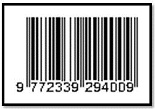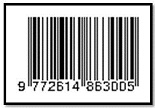Emoticons as Speech Act Amplifiers: An Analysis of Pragmatics in Online Communication
Abstract
This study explores the pragmatic function of emoticons as amplifiers of speech acts in online communication, focusing on Instagram comment sections. Using a qualitative content analysis method with a pragmatic discourse approach, the research investigates how specific emoticons strengthen the illocutionary force of digital utterances. A total of 100 user comments containing emoticons were analyzed and categorized based on their communicative functions. The findings reveal that emoticons such as 🤣 and 💀 reinforce expressive acts like humor and exaggeration; 🔥 and ❤️ enhance assertive acts such as praise and approval; and 🙂 indicates subtle commitment in commissive speech acts. The study also highlights cultural shifts in meaning such as 💀 evolving into a symbol of humorous panic and emphasizes the importance of context in interpretation. These results confirm that emoticons serve not only as emotional indicators but also as strategic pragmatic tools that shape meaning, influence perception, and reduce misinterpretation in text-based digital communication.
Keywords
Full Text:
PDFReferences
L. K. Kaye, H. J. Wall, and S. A. Malone, “‘Turn that frown upside-down’: A contextual account of emoticon usage on different virtual platforms,” Comput. Human Behav., vol. 60, pp. 463–467, Jul. 2016, doi: 10.1016/j.chb.2016.02.088.
G. Ju and R. Zhao, “How do emoticons affect youth social interaction? The impact of emoticon use on youths online interpersonal interactions,” Front. Commun., vol. Volume 9-, 2024, [Online]. Available: https://www.frontiersin.org/journals/communication/articles/10.3389/fcomm.2024.1452633
D. J. Skiba, “Face with Tears of Joy Is Word of the Year: Are Emoji a Sign of Things to Come in Health Care?,” Nurs. Educ. Perspect., vol. 37, no. 1, 2016, [Online]. Available: https://journals.lww.com/neponline/fulltext/2016/01000/face_with_tears_of_joy_is_word_of_the_year__are.15.aspx
J. R. Searle, SPEECH ACTS AN ESSAY IN THE PHILOSOPHY OF LANGUAGE. Cambridge University Press, 1969.
R. Godard and S. Holtzman, “The Multidimensional Lexicon of Emojis: A New Tool to Assess the Emotional Content of Emojis,” Front. Psychol., vol. Volume 13, 2022, [Online]. Available: https://www.frontiersin.org/journals/psychology/articles/10.3389/fpsyg.2022.921388
L. Gawne and G. McCulloch, “Emoji as digital gestures,” Lang. internet, vol. 17, no. 2, 2019.
G. Yule, “Pragmatics,” 1996, Oxford University Press.
D. Z. Kádár, Politeness, Impoliteness and Ritual: Maintaining the Moral Order in Interpersonal Interaction. Cambridge: Cambridge University Press, 2017. doi: DOI: 10.1017/9781107280465.
N. Aldunate and R. González-Ibáñez, “An Integrated Review of Emoticons in Computer-Mediated Communication,” Front. Psychol., vol. 7, 2017, [Online]. Available: https://www.frontiersin.org/journals/psychology/articles/10.3389/fpsyg.2016.02061
A. H. Shaari, “Accentuating Illocutionary Forces: Emoticons as Speech Act Realization Strategies in a Multicultural Online Communication Environment,” 3L Southeast Asian J. English Lang. Stud., vol. 26, no. 1, pp. 135–155, Mar. 2020, doi: 10.17576/3L-2020-2601-10.
L. Li and Y. Yang, “Pragmatic functions of emoji in internet-based communication---a corpus-based study,” Asian-Pacific J. Second Foreign Lang. Educ., vol. 3, no. 1, p. 16, 2018, doi: 10.1186/s40862-018-0057-z.
J. Gettinger and S. T. Koeszegi, “More Than Words: The Effect of Emoticons in Electronic Negotiations,” 2015, Springer International Publishing. doi: 10.1007/978-3-319-19515-5_23.
J. Ge-Stadnyk, “Communicative functions of emoji sequences in the context of self-presentation: A comparative study of Weibo and Twitter users,” Discourse Commun., vol. 15, no. 4, pp. 369–387, Aug. 2021, doi: 10.1177/17504813211002038.
D. Thompson and R. Filik, “Sarcasm in Written Communication: Emoticons are Efficient Markers of Intention,” J. Comput. Commun., vol. 21, no. 2, pp. 105–120, Mar. 2016, doi: 10.1111/jcc4.12156.
M. I. Azka and M. Candria, “The Commissive Speech Acts Performed by Alma and Mirabel Madrigal in Encanto Movie (2021),” Cult. J. Cult. Lit. Linguist. Stud. Vol 8, No 1 Cult. J. Cult. Lit. Linguist. Study (June 2024)DO - 10.14710/ca.v8i1.22159 , Jun. 2024, [Online]. Available: https://ejournal2.undip.ac.id/index.php/culturalistics/article/view/22159
S. Dubé, A. N. Gesselman, E. M. Kaufman, M. Bennett-Brown, V. P. Ta-Johnson, and J. R. Garcia, “Beyond words: Relationships between emoji use, attachment style, and emotional intelligence,” PLoS One, vol. 19, no. 12, p. e0308880, Dec. 2024, [Online]. Available: https://doi.org/10.1371/journal.pone.0308880
E. Glikson, A. Cheshin, and G. A. van Kleef, “The dark side of a smiley: Effects of smiling emoticons on virtual first impressions.,” Soc. Psychol. Personal. Sci., vol. 9, no. 5, pp. 614–625, 2018, doi: 10.1177/1948550617720269.
N. Aldunate et al., “Emotional text messages affect the early processing of emoticons depending on their emotional congruence: evidence from the N170 and EPN event related potentials,” Cogn. Process., vol. 25, no. 4, pp. 621–634, 2024, doi: 10.1007/s10339-024-01223-y.
K. E.A. and K. F.I., “Digital Communication and Multimodal Features: Functioning of Emoji in Interpersonal Communication,” Rudn J. Lang. Stud. Semiot. Semant., vol. 13, no. 3, pp. 769–783, 2022, doi: DOI: 10.22363/2313-2299-2022-13-3-769-783.
H. P. Grice, “Logic and Conversation,” 1975, Academic Press.
HOGENBOOM ALEXANDER, D. BAL, FRASINCAR FLAVIUS, M. BAL, F. D. E. JONG, and U. KAYMAK, “EXPLOITING EMOTICONS IN POLARITY CLASSIFICATION OF TEXT,” J. Web Eng., vol. 14, no. 1-2 SE-Articles, pp. 22–40, Mar. 2015, [Online]. Available: https://journals.riverpublishers.com/index.php/JWE/article/view/3887
P. Kralj Novak, J. Smailović, B. Sluban, and I. Mozetič, “Sentiment of Emojis,” PLoS One, vol. 10, no. 12, p. e0144296, Dec. 2015, [Online]. Available: https://doi.org/10.1371/journal.pone.0144296
J. Y. Lee, N. Hong, S. Kim, J. Oh, and J. Lee, “Smiley face: why we use emoticon stickers in mobile messaging,” in Proceedings of the 18th International Conference on Human-Computer Interaction with Mobile Devices and Services Adjunct, in MobileHCI ’16. New York, NY, USA: Association for Computing Machinery, 2016, pp. 760–766. doi: 10.1145/2957265.2961858.
G. Mazzola, M. Mannone, Y. Pang, M. O’Brien, and N. Torunsky, “De Saussure and Peirce: the Semiotic Architecture BT - All About Music: The Complete Ontology: Realities, Semiotics, Communication, and Embodiment,” G. Mazzola, M. Mannone, Y. Pang, M. O’Brien, and N. Torunsky, Eds., Cham: Springer International Publishing, 2016, pp. 63–66. doi: 10.1007/978-3-319-47334-5_7.
Stephen C. Levinson, Pragmatics. Cambridge University Press, 1983.
G. Tigwell, B. Gorman, and R. Menzies, Emoji Accessibility for Visually Impaired People. 2020. doi: 10.1145/3313831.3376267.
G. Zhou, S. De Souza, E. Markham, O. Kwakpovwe, and S. Zhao, “Semantics and Sentiment: Cross-lingual Variations in Emoji Use,” in Proceedings of the 2024 Conference on Empirical Methods in Natural Language Processing, Y. Al-Onaizan, M. Bansal, and Y.-N. Chen, Eds., Miami, Florida, USA: Association for Computational Linguistics, Nov. 2024, pp. 18698–18712. doi: 10.18653/v1/2024.emnlp-main.1041.
J. Ge and U. Gretzel, “Emoji rhetoric: a social media influencer perspective,” J. Mark. Manag., vol. 34, no. 15–16, pp. 1272–1295, Oct. 2018, doi: 10.1080/0267257X.2018.1483960.
B. Gao and D. P. VanderLaan, “Cultural Influences on Perceptions of Emotions Depicted in Emojis,” Cyberpsychology, Behav. Soc. Netw., vol. 23, no. 8, pp. 567–570, Aug. 2020, doi: 10.1089/cyber.2020.0024.
DOI: https://doi.org/10.31764/leltj.v13i1.30822
Refbacks
- There are currently no refbacks.
Copyright (c) 2025 Hafizh Nur Herdian

This work is licensed under a Creative Commons Attribution-ShareAlike 4.0 International License.
_____________________________________________________
Linguistics and ELT Journal
p-ISSN 2339-2940 | e-ISSN 2614-8633

LELTJ is licensed under a Creative Commons Attribution-ShareAlike 4.0 International License.
_____________________________________________________
LELTJ is abstracting & indexing in the following databases:
_____________________________________________________
LELTJ Editorial Office:













